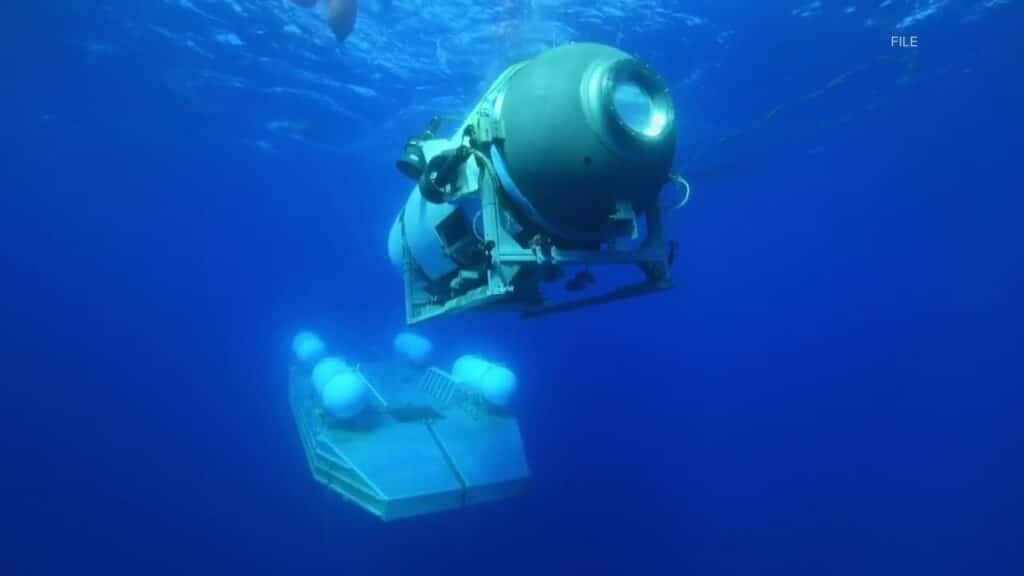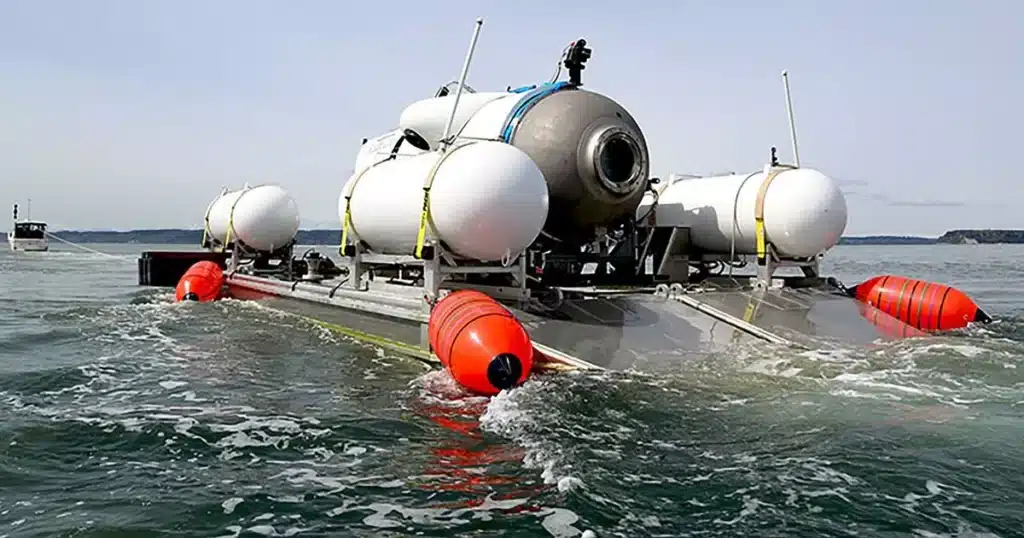Last week, the US Coast Guard (USCG) sadly confirmed the tragic outcome of the four-day search for the missing Titan Submarine. Regrettably, it is believed that all five individuals on board the vessel have lost their lives. During the search, rescuers discovered a debris field within the designated search area, where teams were actively looking for the missing submersible en route to the Titanic wreck.
Using a remotely-operated underwater search vehicle (ROV), pieces of debris from the Titan submersible were located on the ocean floor. These fragments were found approximately 488 meters (1,600 feet) away from the bow of the sunken Titanic. The presence of this debris strongly indicates a catastrophic implosion of the vessel, as explained by USCG Rear Admiral John Mauger during a press conference held in Boston.
How Did the Titan Submarine Implode?

While there is no definitive proof regarding the exact sequence of events, experts speculate that the implosion of the Titan Submarine likely occurred on Sunday, the first day of the dive.
The Titan was constructed using carbon fiber and titanium, materials believed to have the ability to withstand the immense pressure found at depths of up to 4,000 meters. The submersible’s hull was specifically designed to provide protection for the crew against the crushing water pressure experienced in such deep-sea environments.
To put the water pressure at the Titanic wreck site into perspective, it is approximately 400 atmospheres or 6,000 PSI at a depth of 3,800 meters. This level of pressure is equivalent to the weight of about 35 elephants resting on one’s shoulders, illustrating the extreme conditions encountered in the depths of the ocean.
According to Experts
“Any deep divers know how unforgiving the abyssal plain is: going undersea is as, if not more, challenging than going into space from an engineering perspective.”
According to Eric Fusil, the director of the Shipbuilding Hub for Integrated Engineering at the University of Adelaide, Australia, experienced deep divers understand the unforgiving nature of the abyssal plain. From an engineering standpoint, venturing into the depths of the ocean presents challenges that can be as, if not more, complex than those encountered in space exploration.
Experts have raised concerns about the choice of materials, specifically titanium and carbon fiber, for deep diving purposes due to their differing properties. Titanium possesses elasticity, enabling it to adapt to various stresses and pressures without experiencing permanent strain on the material. On the other hand, carbon fiber is stiffer and non-elastic, making it more prone to cracking under certain conditions.
In an article published on Friday in The Conversation, Eric Fusil speculates that the contrasting properties of the materials used in the construction of the Titan Submarine’s hull may have contributed to a potential defect. This defect, he suggests, could have triggered an instantaneous implosion due to the overwhelming pressure of the underwater environment.
Fusil further explains that with the weight of a 3,800-meter column of water pressing down on the vessel, the hull would have swiftly crumpled from all sides within less than one second. The implosion would have occurred so rapidly that everyone on board would have been fatally impacted within a timeframe of fewer than 20 milliseconds—a speed faster than the brain can even process the information.
“Within less than one second, the vessel — being pushed down on by the weight of a 3,800m column of water — would have immediately crumpled in from all sides.”



